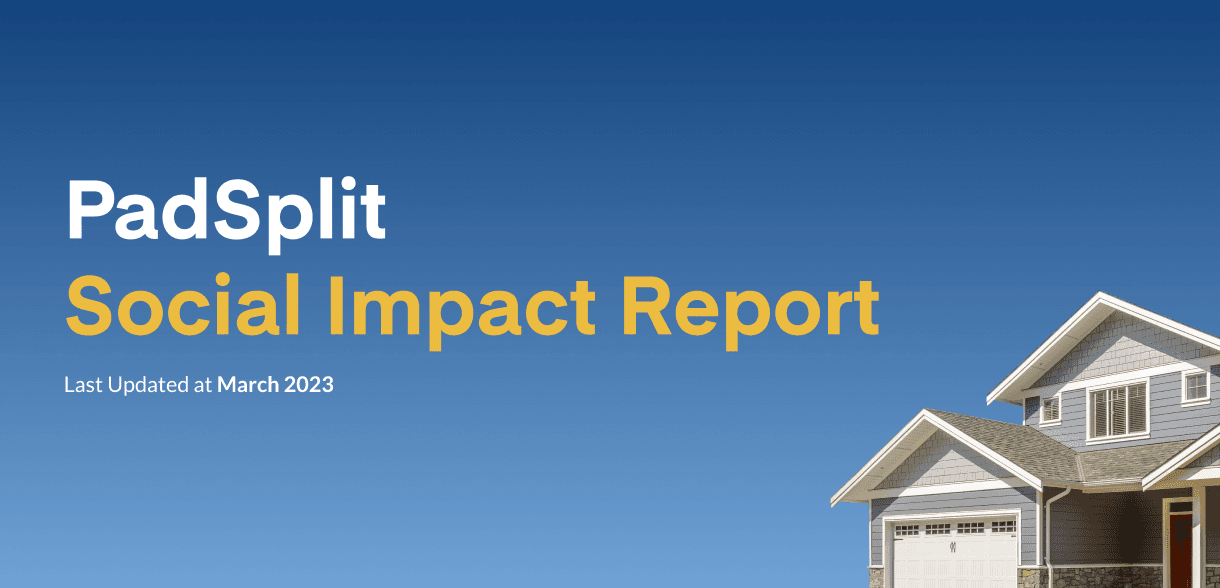As universities across the United States increasingly prioritize luxury amenities, the cost of on-campus living has surged, making it inaccessible for many students and exacerbating the financial burden of higher education. This trend, driven by privatization and competition for student enrollment, highlights a growing divide in student housing options. However, affordable alternatives like PadSplit offer practical solutions for students seeking flexibility and affordability in housing without sacrificing essential living standards.
For example, Louisiana State University offers upperclassmen accommodations with high-end finishes like granite countertops and garbage disposals. The University of Kentucky has also embraced this trend, offering lavish amenities such as outdoor fire pits and full-size beds in its dormitories. While these upgrades may enhance the student experience, they come at a steep cost, driving up housing fees significantly.
According to a 2023 report by The College Board, the average cost of room and board at public four-year institutions has risen by 14% above inflation over the past decade, reaching $12,770 per year.
Why universities are focusing on luxury amenities and privatization
The rise in luxury dorms is driven by several factors, including increased competition for students, financial pressures, and changing student expectations. Universities are engaged in an “amenities arms race” to attract students, particularly out-of-state and international enrollees who pay higher tuition. Upscale dorms with features like private bathrooms, rooftop terraces, and fitness centers have become key selling points as universities compete to offer a “luxury college experience.”
Financial pressures also play a significant role. With declining state funding, many universities have turned to privatization, partnering with private developers to build and manage student housing. While this reduces the financial risk for universities, it often leads to higher rents as developers seek to maximize profits.
According to a 2023 report by RealPage, the average rent for purpose-built student housing has increased by 7.0% year-over-year, contributing to the overall surge in dorm costs.
Shifting student demographics are also a factor, as many students—particularly those from more affluent backgrounds—now expect high-end amenities in their housing. However, this focus on luxury has sparked growing concerns about affordability, with lower-income students often priced out of on-campus options.
While luxury student housing is likely to continue in the near term, public backlash, policy changes, and economic pressures could force universities to shift focus. Rising costs, combined with student debt concerns, may push institutions to prioritize affordable housing solutions over luxury dorms in the future.
Public vs. private institutions: A breakdown of rising dorm costs
The rise in dorm costs is not uniform across all institutions. Data shows that private universities typically charge more for room and board than public universities. According to the National Center for Education Statistics (NCES), the average cost of room and board at private four-year institutions in the 2022-2023 academic year was $14,410, compared to $12,770 at public four-year schools. However, public universities are catching up, as many have started partnering with private developers to create luxury housing options that appeal to higher-income students.
The College Board’s data shows that the Northeast and West regions of the U.S. tend to have the highest dorm costs, with prices ranging from $1,000 to $1,499 per bed monthly. In contrast, schools in the South offer more affordable options, with prices between $750 and $900 per bed monthly. However, even these regions are seeing significant increases in dorm fees as schools race to meet the demand for upscale accommodations.
The hidden role of privatization in rising dorm costs
One of the less visible trends contributing to the surge in college dorm prices is the growing influence of privatization. With state funding for public universities dwindling and construction costs escalating, many schools are turning to private developers to finance and manage their student housing projects. Under this model, universities lease land to private contractors who assume responsibility for constructing and operating dormitories. In exchange, the university receives a portion of the housing revenue over a long-term lease period, often spanning several decades.
While this arrangement allows universities to build more efficiently and at a lower upfront cost, it often leads to higher rents for students. Private developers are profit-driven and can charge premium prices to recoup their investment. A 2023 report from the real estate research firm RealPage found that the average asking rent for purpose-built student housing grew by 7.0% in Q1 2023, with rates for some luxury units exceeding $1,500 per bed per month. This privatization model has resulted in a greater financial burden on students as universities pass along rising costs in the form of higher accommodation fees.
Regional trends: How dorm costs vary across the U.S.
The cost of on-campus housing can vary significantly depending on the region. For example, colleges in the Northeast and major cities like New York have some of the highest housing costs, with annual room and board fees averaging over $16,000. In contrast, states like Utah offer more affordable options, with average annual costs closer to $8,280.
However, even in traditionally lower-cost regions, dorm prices have been rising faster than inflation. A 2023 survey conducted by the National Multifamily Housing Council (NMHC) found that the cost of purpose-built student housing increased by 8.8% year-over-year, a faster growth rate than tuition increases.
Alternatives to expensive dorms: Why more students are turning to PadSplit
As dorm costs continue to rise, many students are exploring alternative housing options to alleviate financial pressure. One such alternative is PadSplit, the nation’s largest coliving marketplace that offers affordable, furnished rooms for rent in residential homes. PadSplit’s model allows tenants to rent individual rooms in shared houses, significantly reducing the financial burden compared to traditional apartment rentals or luxury dormitories. With rates as low as $151 per week, PadSplit provides a compelling option for budget-conscious students.
Unlike the one-size-fits-all approach of college dorms, PadSplit offers flexibility in choosing housing arrangements, giving students more control over their living environment. This flexibility can be especially appealing to those who need short-term accommodations or prefer off-campus living. Additionally, PadSplit fosters a sense of community through shared spaces and organized events, allowing students to build social connections while saving money.
A 2023 study by the Urban Land Institute (ULI) found that shared housing arrangements, like those offered by PadSplit, can reduce housing costs by up to 50% compared to traditional student housing options. By opting for PadSplit or other affordable alternatives, students can free up valuable financial resources that can be used for tuition, textbooks, and other essential expenses.
PadSplit: A new era of student housing
The rising cost of college dorms is reshaping the landscape of student housing. While luxury amenities may appeal to some students, the financial burden of these upgrades is leaving many undergraduates struggling to afford basic accommodations. Privatization and competition for student enrollment are further driving up costs, making it harder for low- and middle-income students to live on campus.
However, affordable alternatives like PadSplit offer a practical solution to the housing affordability crisis. By providing cost-effective, flexible housing options, PadSplit is helping students avoid the financial strain of luxury dorms and empowering them to focus on their academic success. As dorm costs continue to climb, exploring these alternatives is becoming more important than ever.
Call to action for universities and policymakers: Addressing the student housing crisis
As the cost of college dorms continues to rise, it’s crucial for universities and policymakers to take proactive steps to ensure that higher education remains accessible and affordable for all students. The surge in luxury dormitories has placed a significant financial burden on students, particularly those from low-income backgrounds, and it’s time for institutions to reassess their approach to student housing.
For universities:
- Invest in Affordable Housing Options: Universities should prioritize building and maintaining affordable dormitories that meet students’ basic needs without the excessive luxury price tags. Consider offering tiered housing options to cater to both students seeking luxury and those requiring more budget-friendly accommodations.
- Partner with Non-Profit Developers: Instead of relying solely on private, for-profit developers, universities can explore partnerships with non-profits or state-funded initiatives to create housing that remains affordable in the long term.
- Reallocate Resources: Universities can reallocate resources from extravagant amenities to more impactful areas like financial aid, mental health services, and academic support, helping students who need it most.
For policymakers:
- Increase Funding for Affordable Student Housing: Governments should provide more funding and incentives for universities to build affordable dormitories. This could include low-interest loans, grants, or tax incentives for projects focused on creating cost-effective housing solutions.
- Implement Rent Control in College Towns: Introducing rent control measures in college towns could help curb skyrocketing off-campus housing costs, making it easier for students to find affordable alternatives to dorms.
- Encourage Public-Private Partnerships: Policymakers can promote public-private partnerships that balance the need for modern, safe student housing with affordability. By providing oversight and setting limits on rental increases, these partnerships can prevent the unchecked rise in housing costs.
Universities and policymakers have a crucial role to play in addressing the student housing crisis. By implementing these strategies and prioritizing affordability, they can help ensure that higher education remains accessible to all students, regardless of their financial background.
The rising cost of college dorms presents a significant challenge to the accessibility and affordability of higher education. While luxury amenities may seem attractive, they come at a steep price that many students cannot afford. As universities and policymakers grapple with this issue, it’s crucial to explore and promote alternative housing solutions like PadSplit, which offers affordable and flexible options for students.
By addressing the student housing crisis head-on, we can work towards a future where all students have access to secure, comfortable, and affordable housing options that support their academic success. It’s time for a paradigm shift in student housing, one that prioritizes affordability and accessibility over luxury and excess.
Sources
- Education Data Initiative. “Average Cost of Room and Board at College.” educationdata.org
- Jones, Charisse. “College Housing Prices Are Soaring. Here’s Why.” USA Today, September 24, 2024. usatoday.com
- University of California Office of the President. “Historical Fee Levels.” ucop.edu




